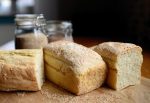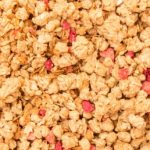Klason lignin is the insoluble residue portion after removing the ash by concentrated acid hydrolysis of the plant tissues. Lignin generally is not polysaccharide but mainly aromatic alcohols (e.g, sinapyl, coniferyl, and p -coumaryl) and is often determined analytically as a part of dietary fiber.
Lignin is inert because of strong intramolecular bonding in its carbon-carbon bonds. It is partly bonded to nonstarch polysaccharides (NSPs) (Kay, 1982). They serve to strengthen cell walls and protect them from chemical, mechanical and enzymatic damage (Liyama et al., 1994).
The most reliable method for quantitative lignin analysis and now used as the standard method for lignin determination is: the lignocellulosic feedstock is extracted by benzene and ethanol, then 72% concentrated sulfuric acid is added and the reaction is conducted at 30 °C for 4 h; the sulfuric acid is then diluted to 3% and reacted for 2 h with reflux, and the insoluble substrate is weighed as lignin.
References
Kay, R. M. (1982). Dietary fiber. Journal of Lipid Research, 23(2), pp. 221-242.
Liyama, K., Lam, T. B. T., & Stone, B. A. (1994). Covalent cross-links in the cell wall. Plant Physiology, 104(2), 315.


Leave a Reply